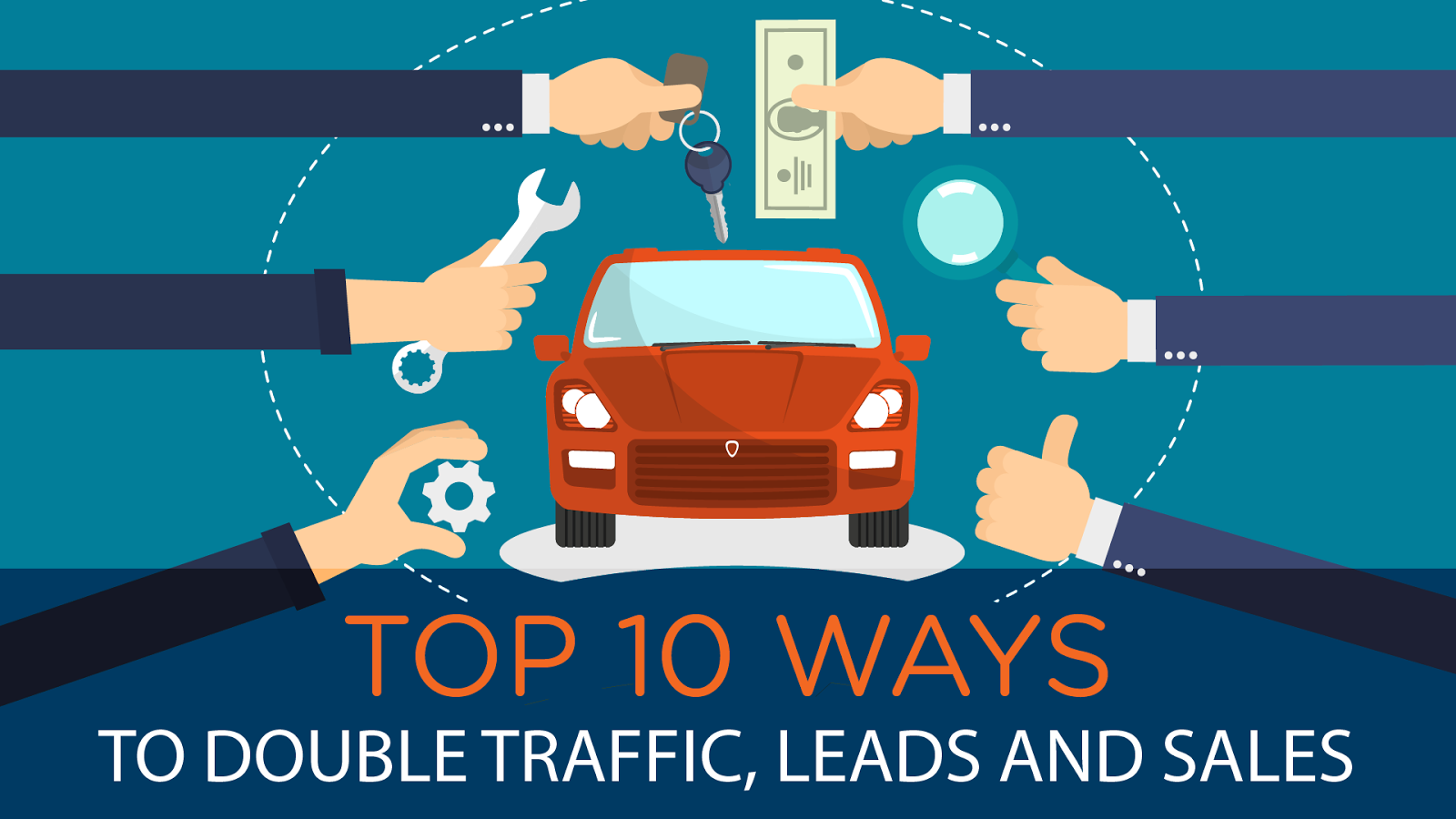
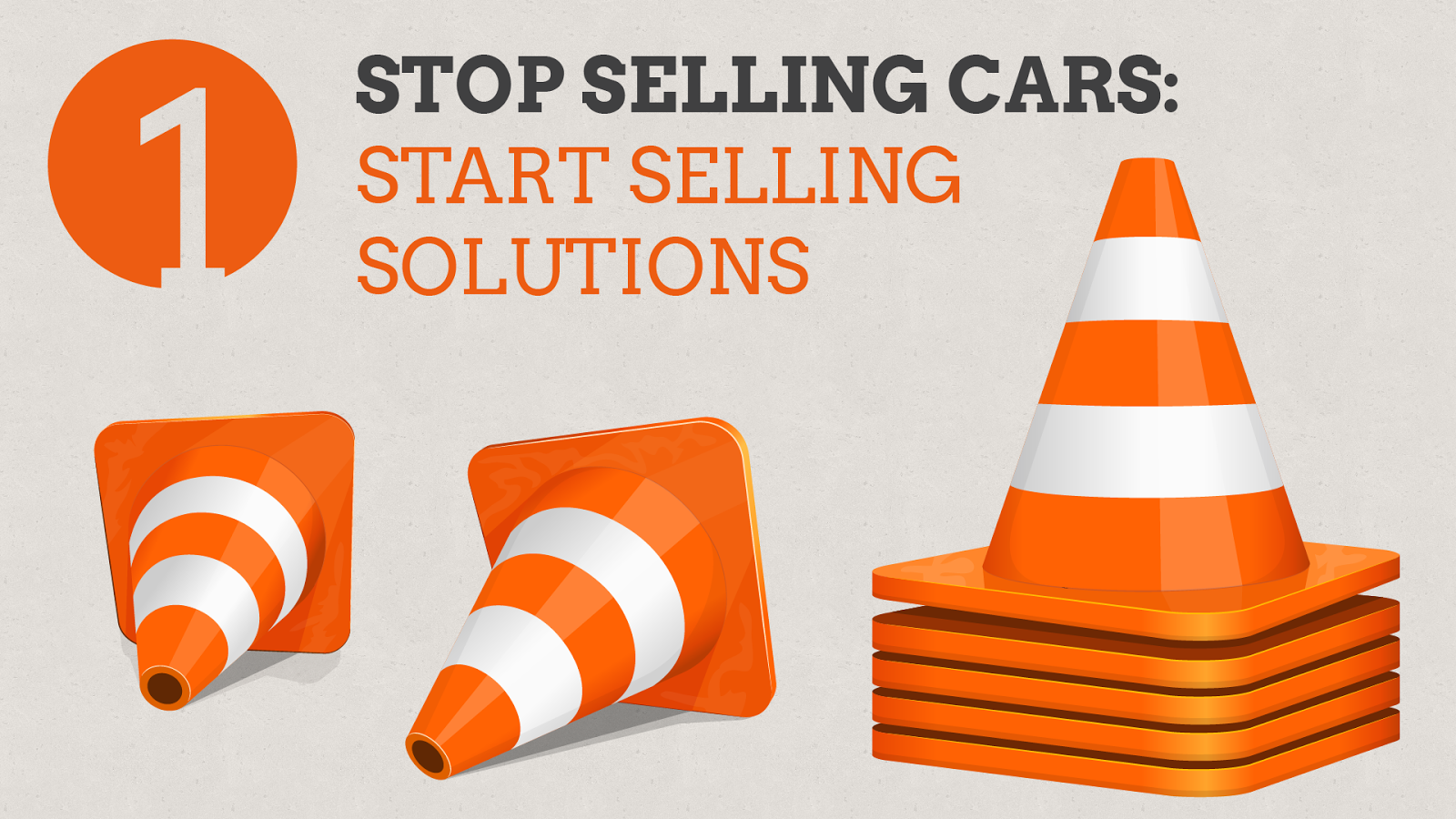
Today, more than ever, cars are commodities. There are countless web sites that give customers the information they need to negotiate the lowest price possible. Not to mention, every dealership sells cars.
Selling cars doesn’t make your dealership unique or special. In most cases, if a customer can buy the same car for less at a different dealership, they will. What’s worse, customers have come to expect the lowest price.
Offering cars for low prices is no longer a competitive advantage because every dealership is offering the same thing.
One of the fastest and most predictable ways to stand out in the marketplace and double store traffic is to start offering solutions instead of simply offering cars.
By “solutions” we mean the help that ordinary people need in order to buy the car they want.
Examples of solutions that customers value are: helping them analyze their current situation and determine what vehicle would be right for their budget and lifestyle; showing them various options for getting rid of a vehicle they no longer want, but may still be making payments on; presenting them with options for financing even if they’ve had past issues with their credit; providing a buying experience that’s fun and stress-free.
Customers value solutions like these far more than they value the promise of cars at low prices, which they’ve come to expect from every other dealership.
Offering and delivering real value in the form of helpful solutions to their real challenges will cause your dealership to stand out instantly in a cluttered market and have an immediate impact on traffic.
You’ll know this is working when you’re consistently seeing customers who aren’t committed to a specific vehicle, who instead are open to an array of options, as long as you can help them solve their problem.
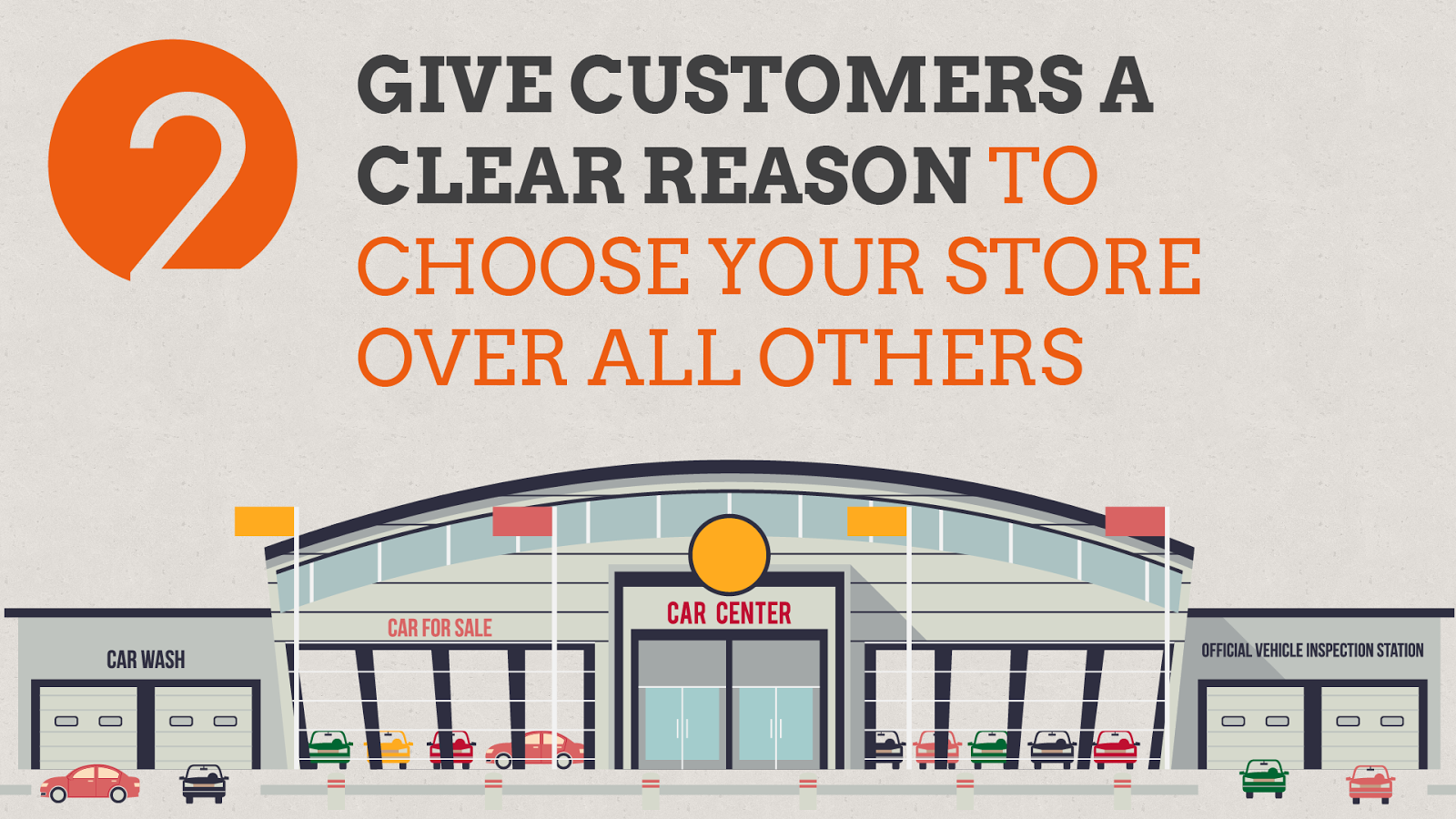
The one thing all customers are seeking more than anything else is a buying preference—a reason to choose one car over another, one dealership over another.
In the absence of a clear buying preference, customers resort to choosing a dealership based on location, availability, or price. But it doesn’t have to be this way.
Our members are seeing customers buy from them without visiting any other dealership or any other dealership web site beforehand.
Why? Because they are providing a clear buying preference (a reason to choose them over all others) in their marketing.
What’s the best buying preference? There is no one right answer.
The best answer for your dealership comes from examining your values, your buying experience, your people and discovering what makes you truly and uniquely valuable when compared to the other options.
You’ll know when you get this right because you’ll see an immediate increase in traffic, and you’ll experience customers buying from you without bothering to shop around first.
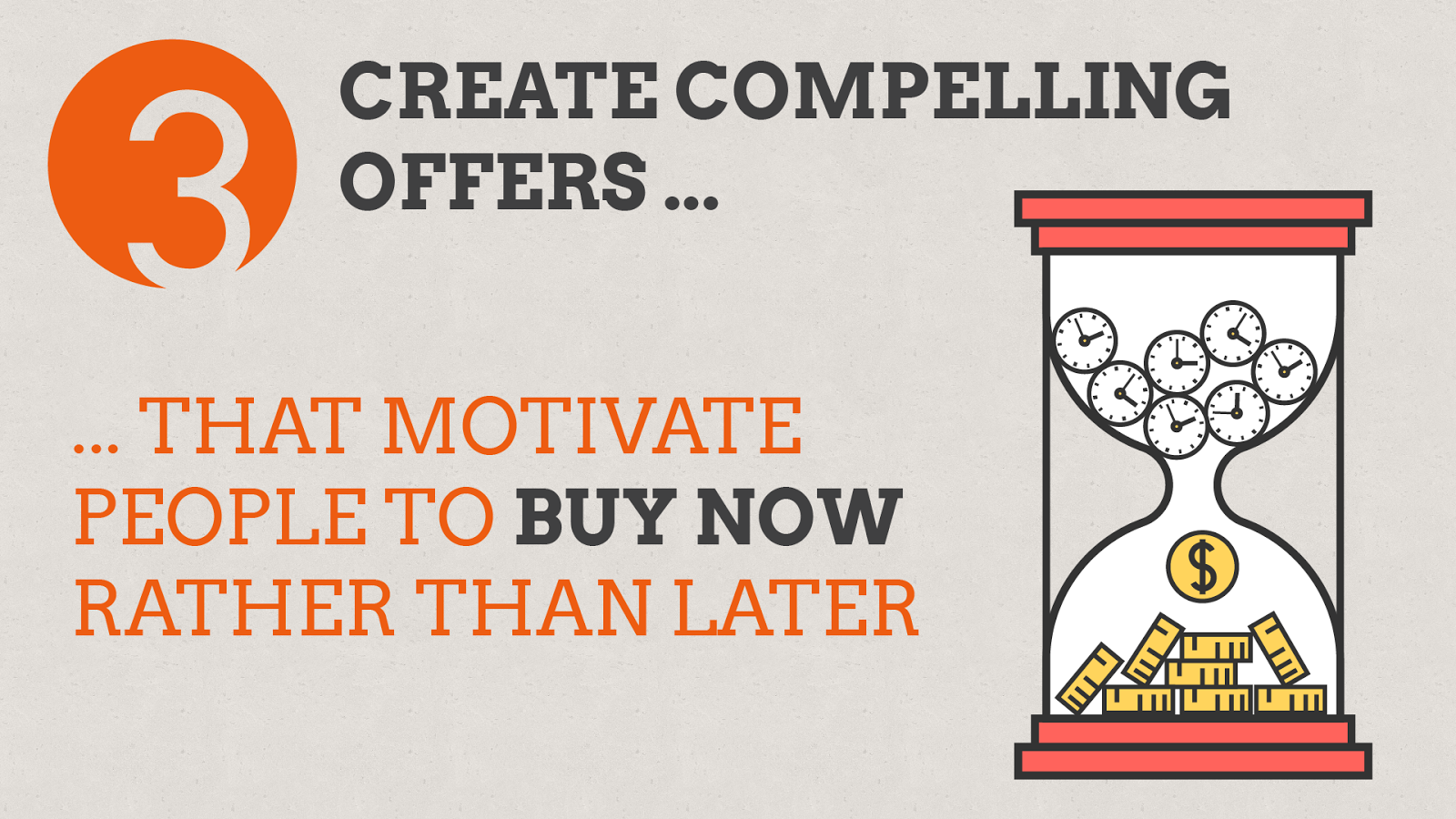
Here’s the deal: everybody wants a nicer car, a newer car than the one they’re driving right now. But most people are comfortably inclined to wait until later to act on their desires.
Dr. Maxwell Maltz called this the deferred life plan—meaning, most people generally put off till later the living they would prefer to enjoy today.
Why do they wait? For a raise, for a new job, to lose weight, to start a new relationship, to get divorced, to move, to graduate, for their kids to start school, for their old car to break down, for a new president to be elected, for their friend to buy a new car. The list goes on and on.
But they truly, ardently desire a better car now, and most dealerships would prefer to sell them a car now rather than later, too.
The secret to accomplishing this, and dramatically increasing your traffic, is in creating compelling special offers (other than low price, because low price is now ordinary) that motivate people to buy now instead of waiting.
The very best special offers combine elements of scarcity (there’s a limited quantity), urgency (only available for a limited time), and believability (because it’s true, and because there’s a reason why the offer is being made).
You’ll know this is working when customers make an effort to act quickly to make sure they’re not left out of the special offer.
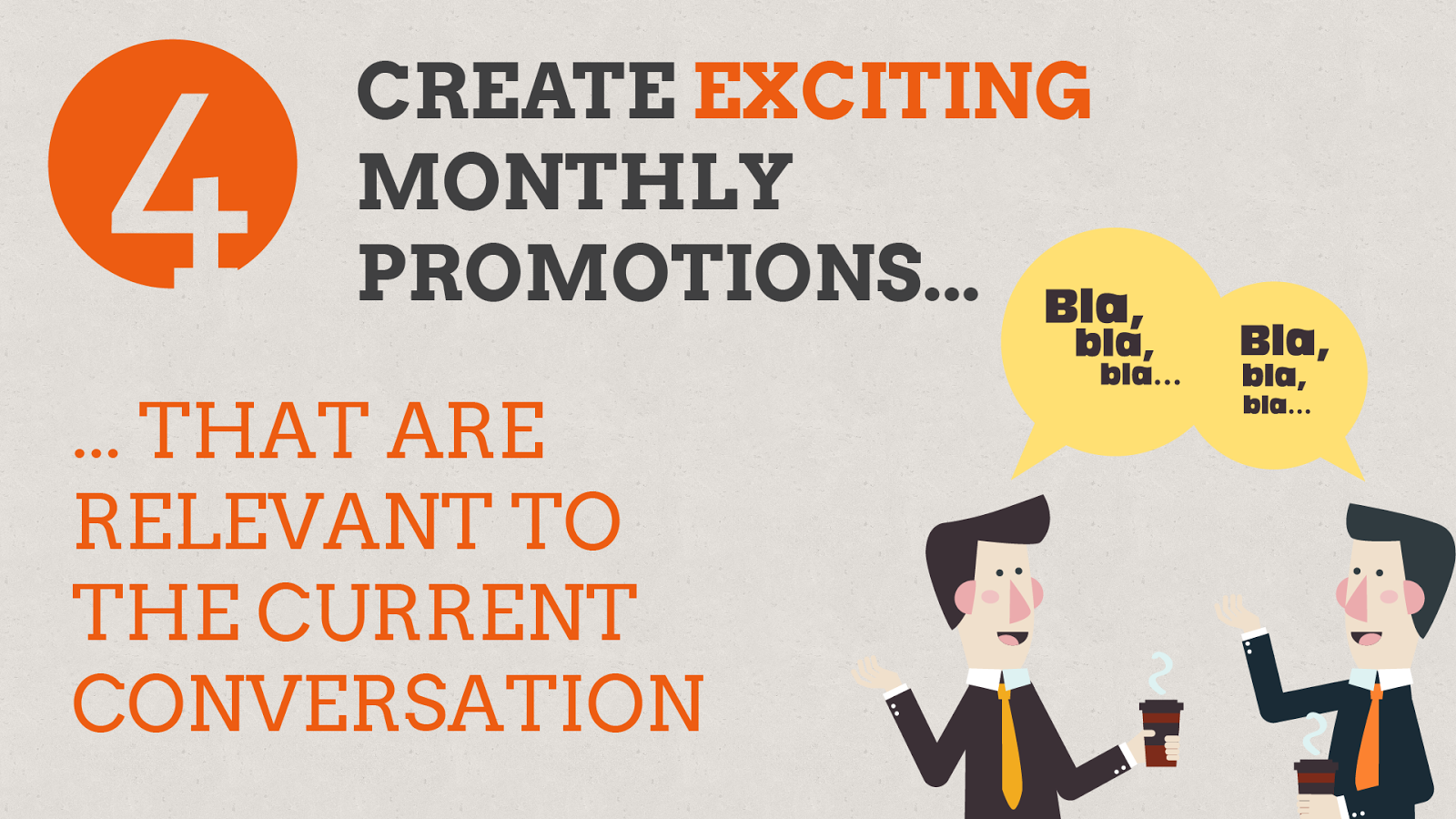
Have you seen or heard any car ads recently? They’re usually pretty bad. A lot of screaming and yelling, loud heavy metal music, cars driving past, low prices flashing on the screen. And they all seem the same.
In fact, they’re so bad that most dealerships have stopped advertising all together (other than online vehicle listing services).
On the other hand, it’s still entirely possible to drive a huge amount of traffic to your dealership through traditional advertising (think radio or TV), but the promotional messages must be different.
One approach that has proven to be very effective is to get into a rhythm of releasing a new campaign monthly. The ideal campaigns have these elements:
1. They tie into the current water cooler conversation—what people are already thinking about; they tell a story;
2. They are multi-media and multi-modal, meaning they don’t just exist in your ads, but they also are prevalent in your social media and at the dealership itself;
3. They contain a soundbite—a phrase that will stick in people’s mind (this isn’t a slogan);
4. They get people interested and excited in coming to your dealership because the campaign seems fun and doesn’t seem like the ordinary car ads they’ve learned to ignore.
You’ll know you’ve perfected this when customers start asking you about what your advertising is going to be next month (because they’re paying attention, and they care), and when you hear people repeating phrases from your advertising.
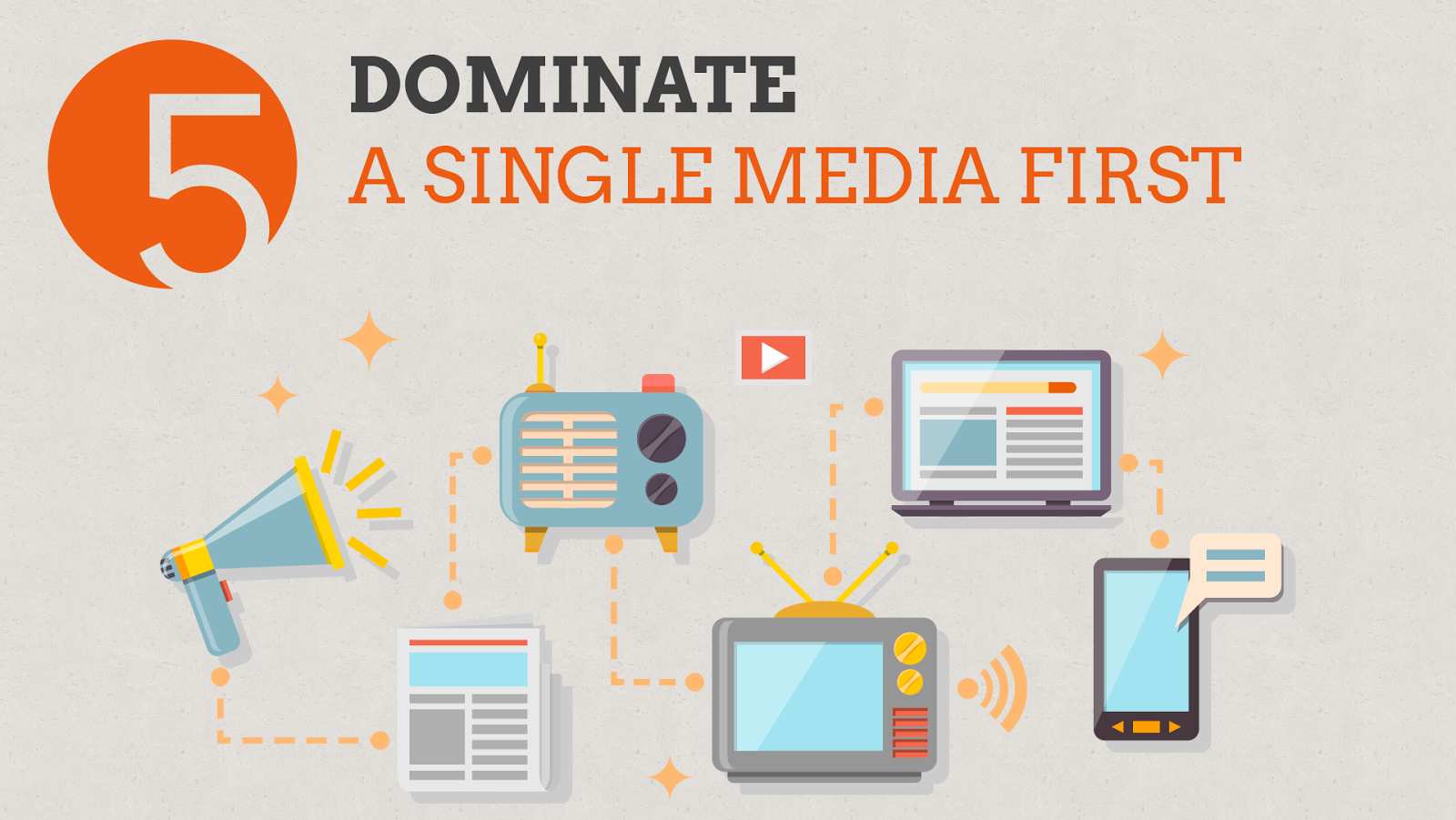
The biggest mistake dealerships make when it comes to advertising is to SPRAY and PRAY.
That is, they spread their ad budget around numerous media options—covering all the bases—and do a little here and a little there, then pray that something works.
This has actually become the de facto standard for media budget allocation over the years.
The contrarian approach, and the approach that results in a tremendous amount of traffic being driven from advertising, is to dominate a single media first, before moving on to a second or third media.
Why does this work?
Because most advertising media require an advertiser to reach a certain threshold or critical mass before they start to be really effective.
Most local advertising absolutely fails to ever reach this threshold, so it absolutely fails to be effective. Also present in every media is a sweet spot— where the return on investment is at its highest—and a point of diminishing marginal returns—where the return on investment starts to drop.
The goal should be to determine the sweet spot in any media and invest up to, but not beyond, that point in order to maximize the traffic that results from that advertising—before adding any other media.
You’ll know this is working when people tell you they hear or see your ads everywhere. When you hit critical mass in any given media, your message becomes ubiquitous and omni-present, and there’s no escape!
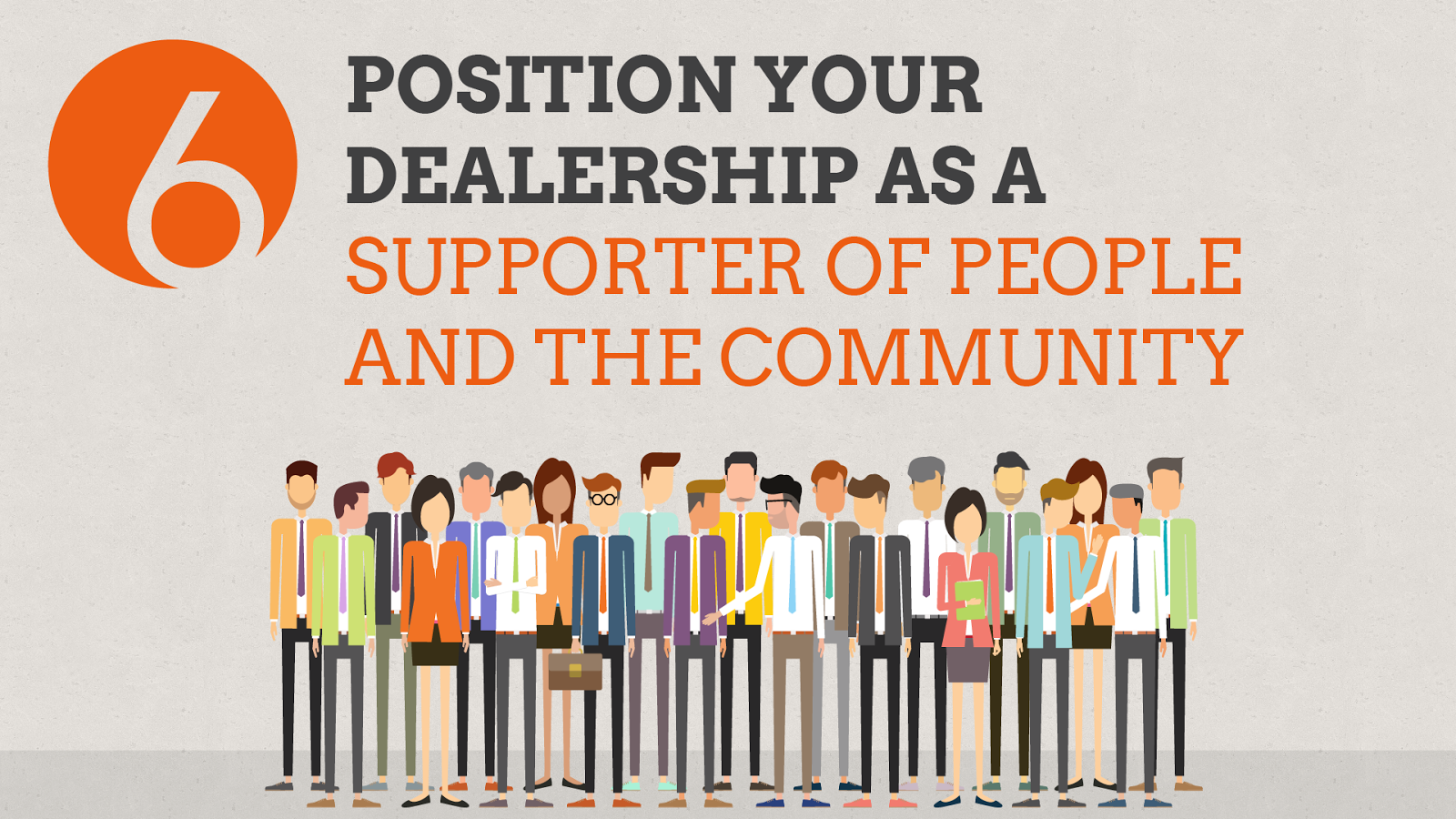
Most dealerships appear to be about one thing—selling cars.
Nothing wrong with that, but that position does not inspire very much excitement or loyalty among customers.
A simple and effective way to get your dealership to stand out and see a big increase in traffic is to make it clear that you stand for more than just selling cars. What do you stand for?
What are you about? What are your values? What do you believe in?
Your answers to these questions should help you form a clear positioning message that makes it evident to the people in your town that you really care about them and about your community.
To fully maximize the opportunity and the results that come from effective positioning, you should go beyond words. Actually support the community. Actually care about your customers.
Actually create an incredible and memorable buying experience. Actually be a provider of solutions, confidence and value.
Many of our members have taken this so seriously that their names have become synonymous with large community events that locals love and look forward to each year.
Other members have supported (and in turn been supported by) local community organizations. This all creates a ripple effect and can have a massive impact on traffic.
You’ll know you nailed it when your customers can explain your unique position as well as your sales people can.
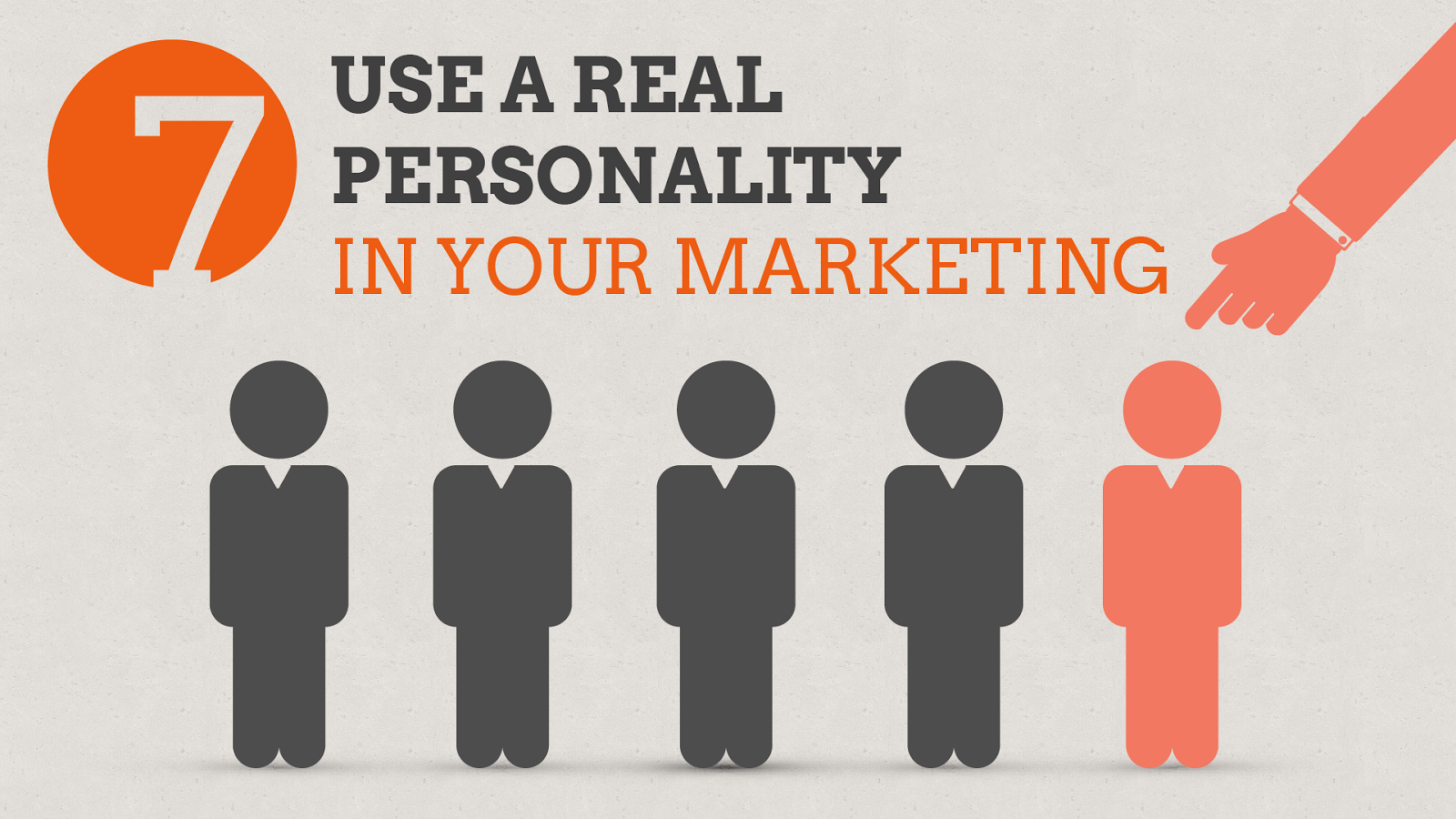
Most car ads either feature loudmouthed voiceover artists, a pretty spokesmodel, a dog or just pictures of cars.
It shouldn’t come as a surprise that customers do not feel a connection to voiceover guys, spokesmodels, or pictures of cars.
On the other hand, our members are enjoying increased results simply by using a real person in their advertising.
Regardless of the media—radio, TV, web site, in store point-of-sale material— featuring a real person as the face, voice and personality of the marketing increases the effectiveness and drives more traffic.
Why does a real person work better than a voiceover, spokesmodel, or car?
Because people care about other people. In a local market, a personal brand can be built rapidly. Personal brands inspire trust.
Personal brands are very magnetic (because customers literally show up to meet the ‘celebrity’ they saw on TV or heard on the radio).
Personal brands build loyalty (people prefer to buy cars from this person instead of from some other company).
Personal brands are memorable. Personal brands are unique—other dealerships have pro voiceovers, spokesmodels, and cars (and they all look and sound pretty similar), but no other dealership will have your personality.
You’ll know this is working for you when people start to recognize you (if you’re the personality) in public, before you introduce yourself.
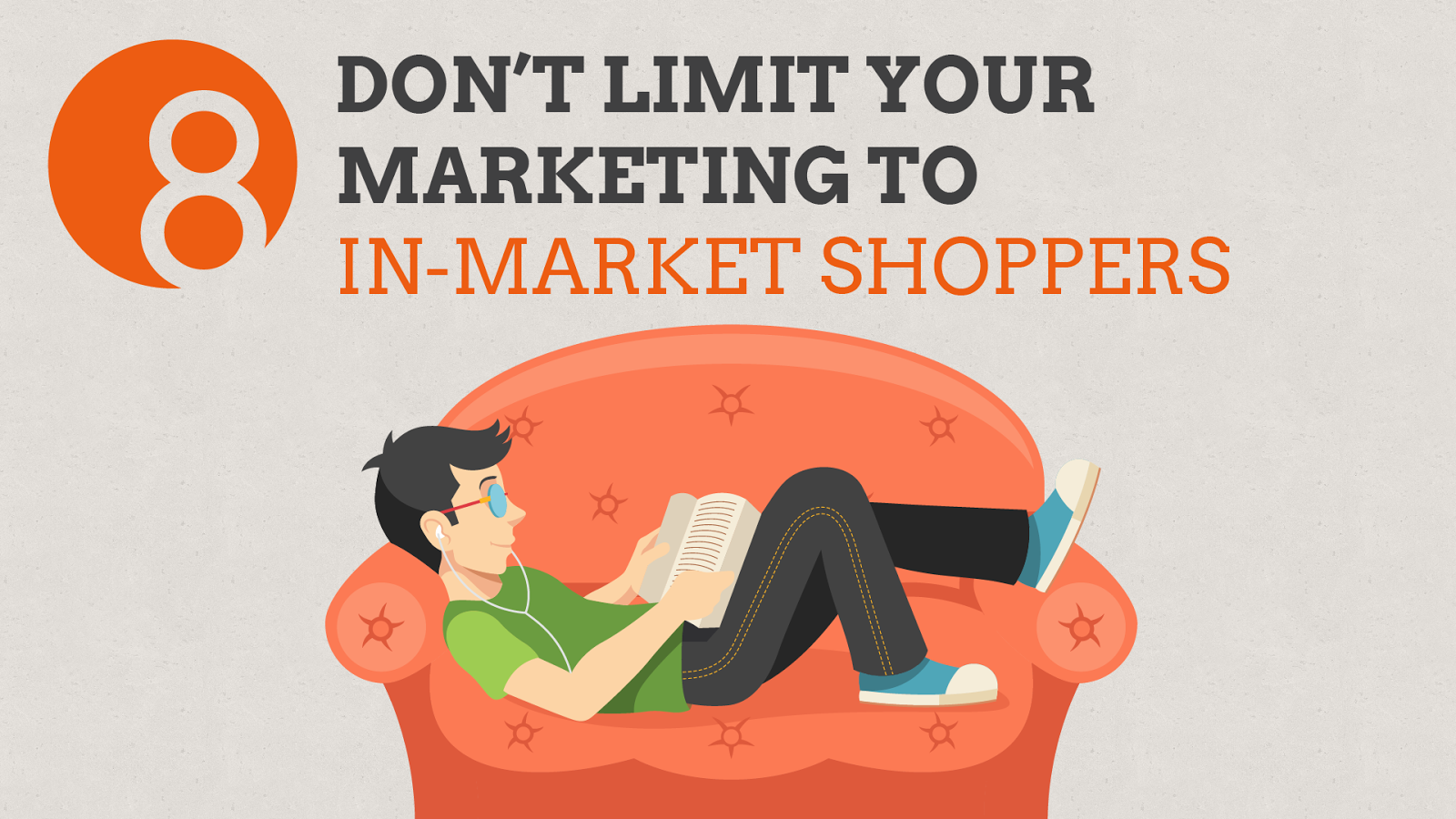
At any given time only about two percent of the population is actively shopping for a vehicle.
Almost all dealership marketing is focused on attracting a portion of that two percent. The result is what you’re used to—a tiny sliver of a small pie.
Our members have realized that while only a small portion of the population is shopping, many people in the remaining 98 percent of the population could be motivated to buy a car sooner rather than later, which would cause those customers to move into the market right now.
This realization has a significant impact on traffic because it enables dealerships to draw traffic from a much larger pool.
While all local dealerships are competing over their fair share of the active shopper market, very few (or often none) of the local dealerships are making any attempt to attract customers from the larger pool of non-active shoppers (called Sleeping Buyers).
You’ll know you’re attracting Sleeping Buyers when people tell you they didn’t intend to buy a car until they heard or saw your ad!
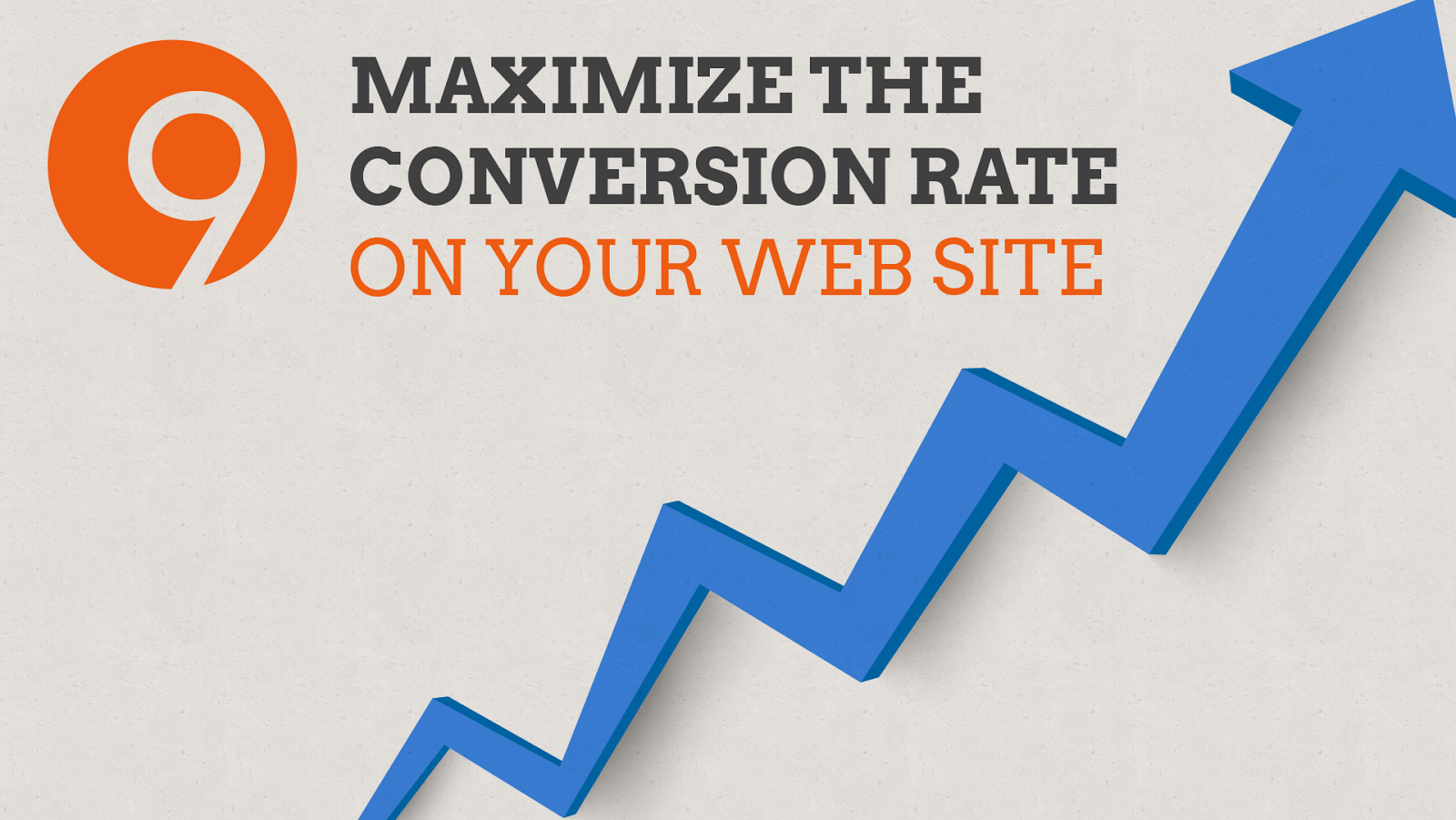
The biggest flaw in automotive marketing today is the abysmal conversion rate on most dealership web sites.
The conversion rate is defined as the percentage of unique visitors that become leads.
Despite vast sums of money being invested to drive traffic to dealership web sites, most web sites completely blow the opportunity because only one or two percent of the unique visitors become leads.
Why do so few visitors become leads? For a variety of reasons: due to limited inventory, most customers don’t find what they’re looking for, so they don’t request more information; most web sites are so confusing that there is not a clear path for visitors to follow—customers don’t know what you want them to do; once a customer sees the price of the vehicle they’re looking for they have all the info they need—there’s no compelling reason for them to become a lead. In fact, most customers visit dealership web sites just to check that dealership off their shopping list (Nope! They don’t have what I’m looking for!).
Alternately, our members enjoy conversion rates of 20 – 45 percent, every day, month after month. Imagine how much more traffic your dealership would have if 30 out of every 100 visitors to your web site became leads versus only 2 out of every 100 visitors becoming leads.
It’s easy to double traffic when your leads multiply by 10x or 20x. So what’s the secret? Simple.
Ask visitors to provide their information before you give them what they want (exchange value for value).
Of course, some people will be turned off and won’t provide you with their information.
But nearly half of the people will, which is a huge win and results in a flood of traffic compared to the alternative.
You’ll know this is working for you when your web site generates more leads than you can keep up with.
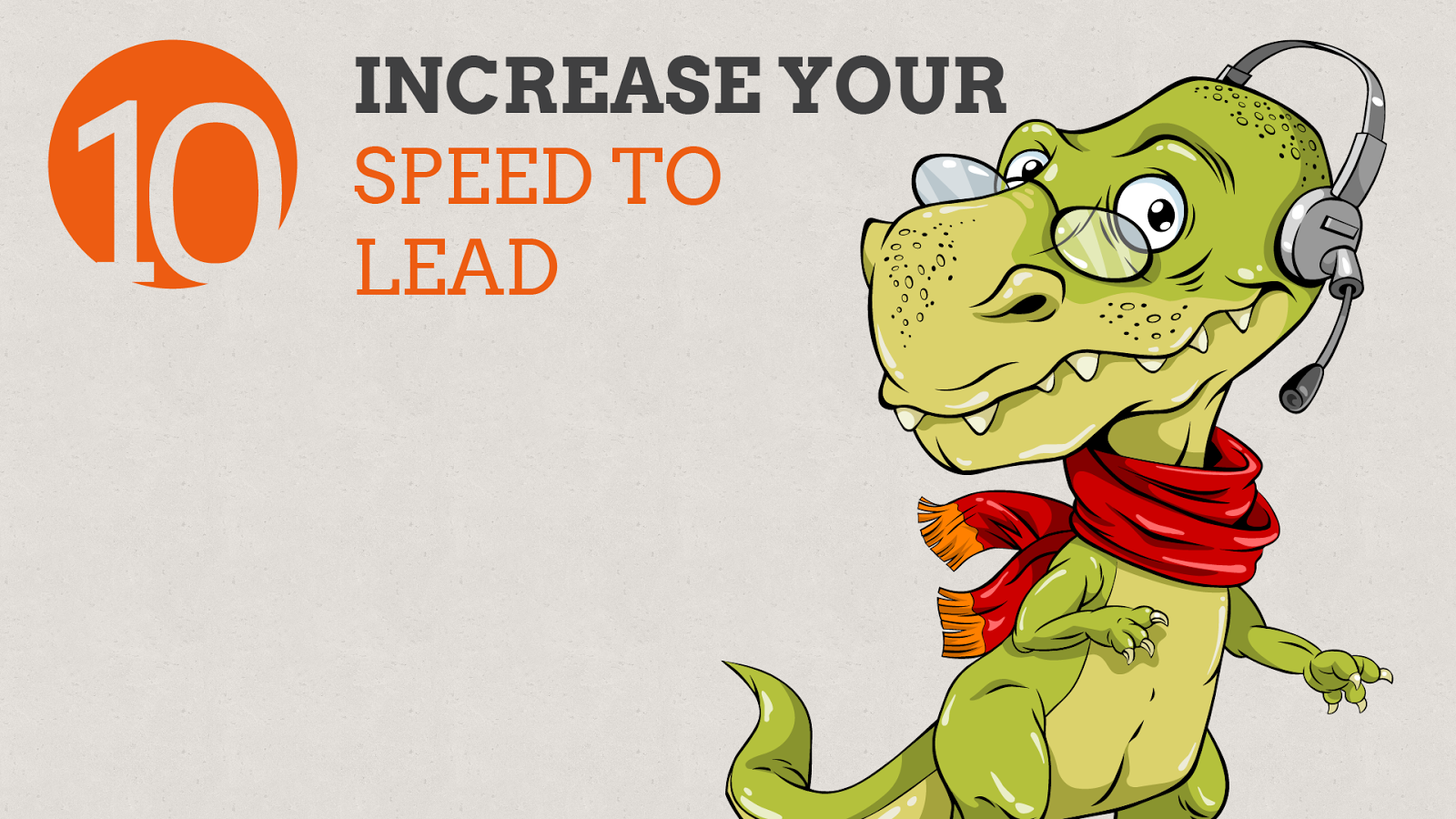
Are you currently generating any leads from your web site? If so, how quickly are you contacting them?
A recent study found that the success rate with leads drops rapidly as time passes. Not surprising.
What is surprising is how quickly the value of a lead decays. Think minutes, not hours or days.
To convert the highest percentage of your leads into traffic, call them in under one minute of receiving the lead.
If you don’t get them, try them again ten minutes later. Still don’t get them? Try again 20 minutes later.
Attempting to contact a lead three times in the first 30 minutes will create an immediate spike in the percentage of leads that convert to appointment, and resulting in more traffic in the dealership.
You’ll know you’re contacting your leads quickly enough when you convert at least 85 percent of your valid leads into appointments.
Serious About Doubling Your Traffic?
The Traffic Institute’s proprietary software program has an algorithm that can analyze your market to compare the number of available Active Shoppers to the number of Sleeping Buyers—those are buyers who want to upgrade their vehicle but aren’t currently shopping. This free report will give you an idea of how much extra traffic you can generate for your store right now.
